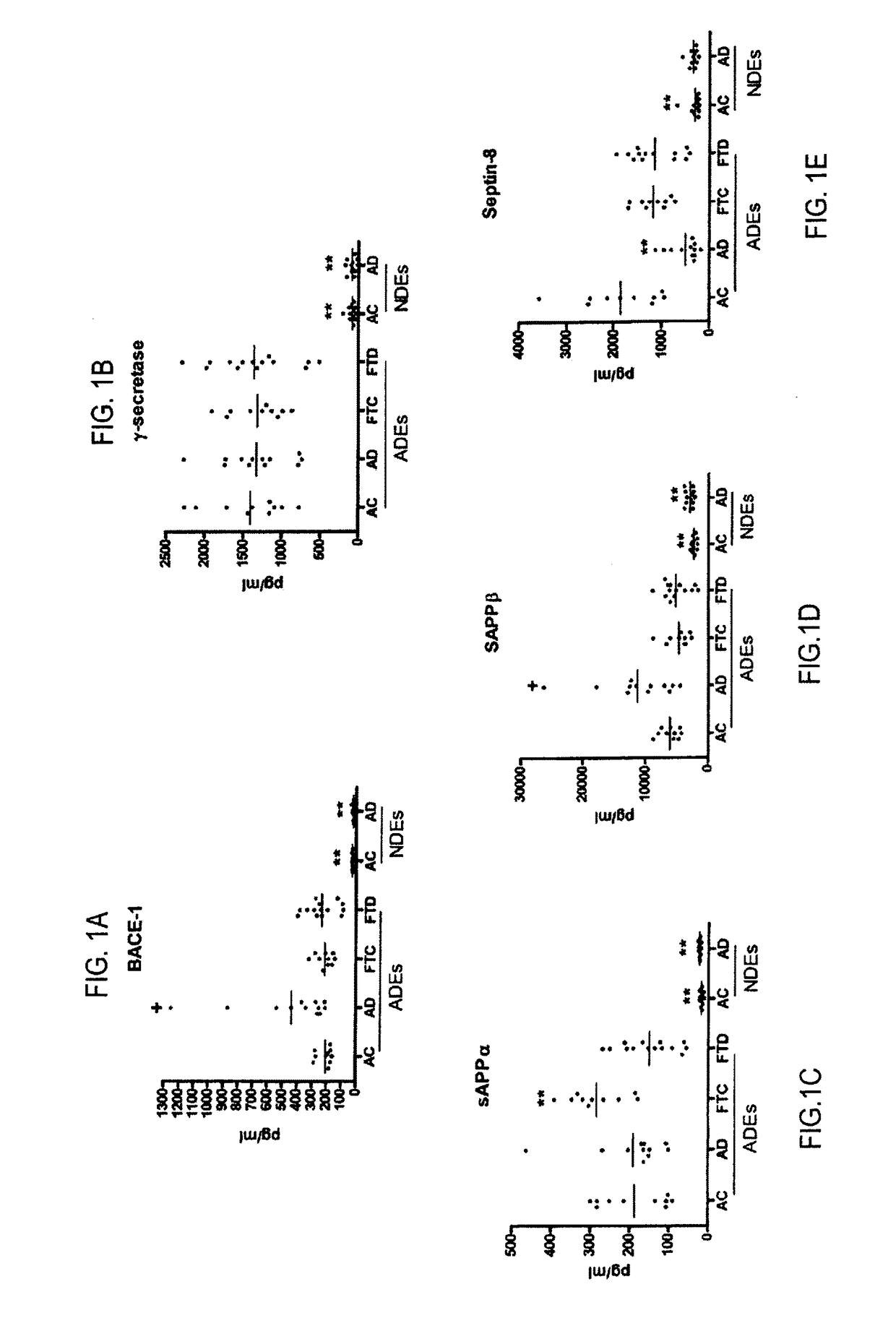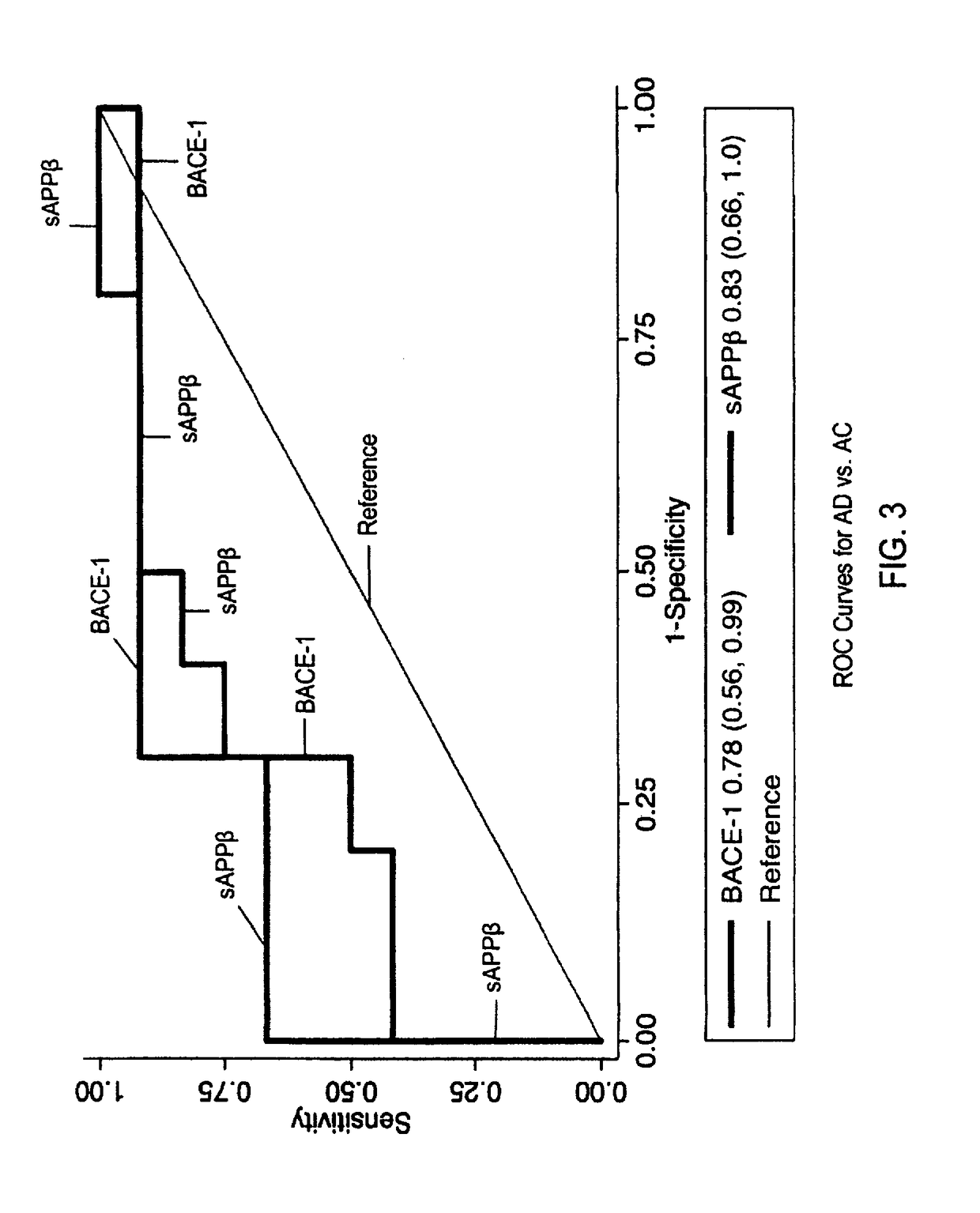Drug efficacy test method for dementias utilizing astrocyte-derived exosomes
a technology of astrocytes and exosomes, which is applied in the field of noninvasive isolation of astrocyte-derived exosomes, can solve the problems of inability to define diagnostic testing, inability to accurately detect the disease, and inability to accurately treat the diseas
- Summary
- Abstract
- Description
- Claims
- Application Information
AI Technical Summary
Benefits of technology
Problems solved by technology
Method used
Image
Examples
experimental examples
[0026]I. ADE and NDE in Treatment of AD
[0027]To exemplify the invention, the amyloidogenic potential of distinct sets of human neural cells was examined by quantifying proteins and products of the Aβ peptide-generating system in neuron-derived exosomes (NDEs) and astrocyte-derived exosomes (ADEs) precipitated and separately immunochemically enriched from plasmas of test subjects with AD or FTD and their matched cognitively normal controls. ADE levels of BACE-1, γ-secretase, sAPPβ, sAPPα, Aβ42, P-T181-tau and P-S396-tau were all significantly three- to 17-fold higher in ADEs than NDEs of test subjects and controls. Levels of only BACE-1 and sAPPβ were significantly higher in ADEs of AD test subjects than control subjects, but not of FTD test subjects than controls. Levels of sAPPβ, sAPPα, Aβ42, P-T181-tau and P-S396-tau were significantly higher in NDEs of AD test subjects than control subjects. The precise profile of ADE cargo proteins is useful in indicating drugs which will be eff...
PUM
| Property | Measurement | Unit |
|---|---|---|
| temperature | aaaaa | aaaaa |
| pH | aaaaa | aaaaa |
| temperature | aaaaa | aaaaa |
Abstract
Description
Claims
Application Information
 Login to View More
Login to View More - R&D
- Intellectual Property
- Life Sciences
- Materials
- Tech Scout
- Unparalleled Data Quality
- Higher Quality Content
- 60% Fewer Hallucinations
Browse by: Latest US Patents, China's latest patents, Technical Efficacy Thesaurus, Application Domain, Technology Topic, Popular Technical Reports.
© 2025 PatSnap. All rights reserved.Legal|Privacy policy|Modern Slavery Act Transparency Statement|Sitemap|About US| Contact US: help@patsnap.com



